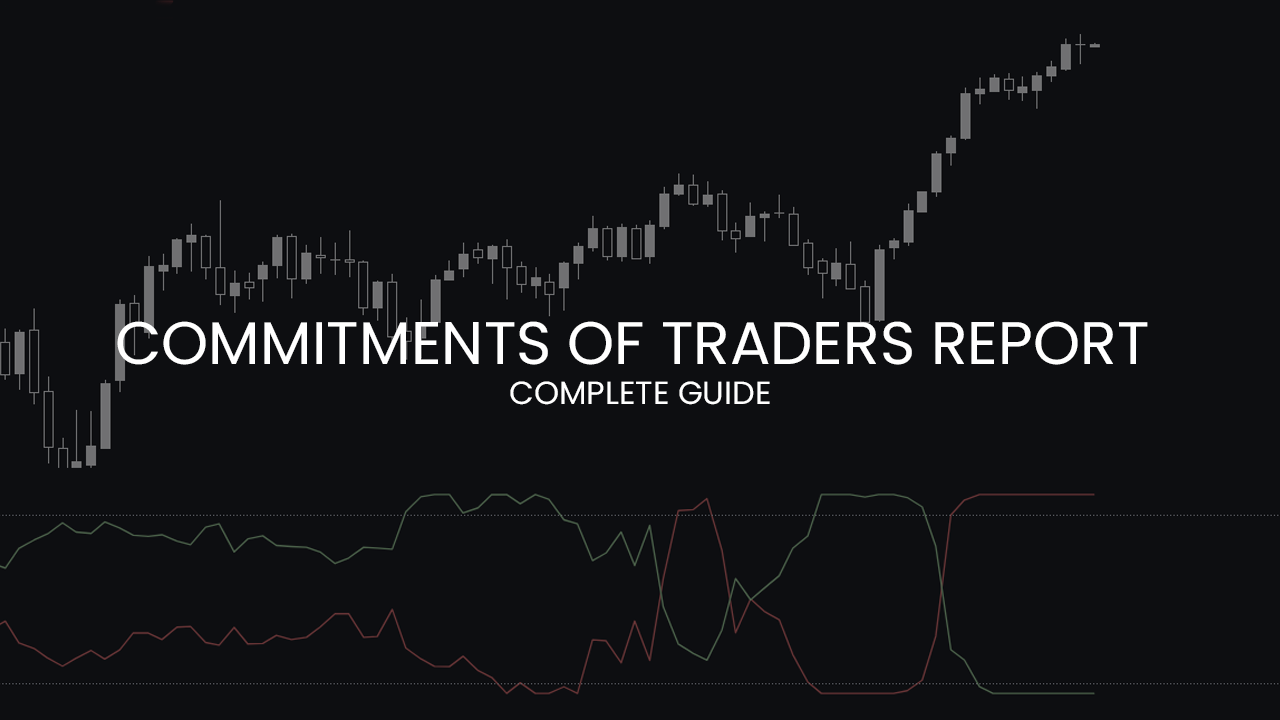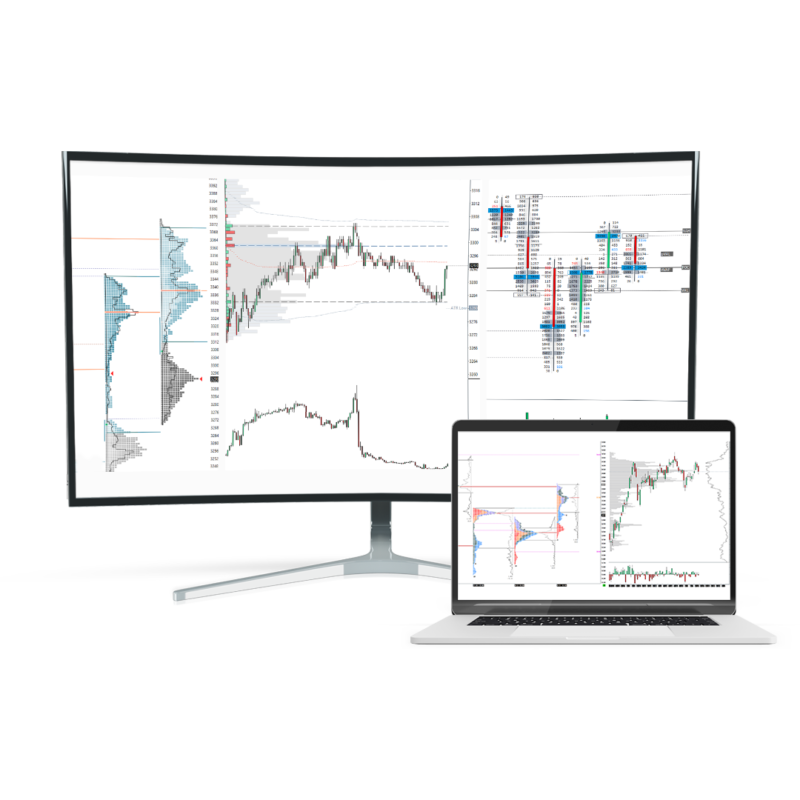
Commitments of Traders (COT) Report – Complete Guide
When we talk about using order flow in trading, we usually have to zoom in to the lower timeframes to use tools such as DOM, footprint or tape.
When used on higher timeframes, these tools very often become completely useless as the details get lost in the amount of data on higher timeframe charts.
But there is one tool that we can use to gain insights into the positioning of different types of trades in the futures markets, it is called the Commitments of Traders (COT) Report.
In this article, you will learn everything you need to know to understand COT reports and especially how to use them as confluence in your trading I believe understanding these reports can be highly useful to predict higher timeframe turning points in legacy futures markets, but also in Bitcoin where CME futures rose in huge popularity in 2023 and are now the largest Bitcoin traded derivative.
If you like this article, read the rest of the blog or join the Tradingriot Bootcamp for a comprehensive video course, access to private discord, and regular updates.
For those who are looking for a new place for trading crypto, make sure to check out Woo. If you register using this link and open your first trade, you will get a Tier 1 fee upgrade for the first 30 days, and we will split commissions 50/50, which means you will get 20% of all your commissions back for a lifetime. On top of that, you will receive a 20% discount for Tradingriot Bootcamp and 100% free access to Tradingriot Blueprint.
Those of you who are trading crypto and want to get a funded trading account can check out Breakout Prop, which is a first evaluation-based proprietary trading firm, that is solely focused on crypto and offers liquidity sourced directly from Tier 1 centralized exchanges, therefore you will be trading actual perpetual contracts rather than CFDs that offer unfair trading conditions and limited coin offerings, you can check them out and get up to $200,000 in funding.
What is the Commitment of Traders report?
Commitment of Traders (COT) report is a report which is published every Friday by the Commodity Futures Trading Commission (CFTC) in the USA.
Because futures markets are regulated, all large entities are required to report their exact positions.
COT report provides an overview of the positions of different market participants.
Not only that COT reports give you an overview of net long and net short positions, but it will also categorize different market participants into groups based on their goals and capital sizes.
By itself, the COT report is not the sexiest looking thing and it can get very confusing to extract any useful information from it.
Luckily there are free websites and also Tradinview indicators which present this in a much more digestible way.
Before we look into that, you need to understand different market participants and their motives.
Table of Contents
COT Market participants
No matter what market you are looking at, you will always find three groups of traders, Commercials, Non-Commercials and Non-reportable.
Commercials
Commercials can be also viewed as “smart money”.
They use futures markets mostly for hedging as they want to protect their underlying assets from large price movements.
They can be either banks trading currency futures, or agricultural producers trading commodities.
These entities have often the most amount of information and are very often bullish at the bottom and bearish at the top.
As you can see on the weekly chart of Silver, commercial positioning heavily increased every time Silver was about to experience a significant weekly uptrend.
At first glance, this looks very good, but before you get too excited let’s have a look at the exact point of where the positioning started to increase.
If you had been following this indicator blindly and simply started to buy when Commercials started to buy, you would not have had a great time.
You need to understand that large market participants buy into down moves and sell into up moves and their time horizons are often in weeks and months rather than a couple of days which is way more common for all retail traders.
Because of that, the COT report is only useful if you are swing trading and are not afraid to hold trades for a little longer.
Rather than trying to use COT reports blindly, use them as confluence in your price action or any other trading strategy to gain more confluence and conviction for your trades.
Non-Commercials
Non-commercials are a mix of speculators, large funds, hedge funds or individual traders.
Everyone who just wants to speculate for financial gains.
More often than not, these guys tend to be wrong, especially if commercials think the other way.
By looking at Platinum futures, we can see that every time non-commercials heavily increased their long positions, the market topped and sold off.
Non-reportable
These are the small (retail) traders that are not required to report their positions to CFTC (non-professional traders), we do not need to worry about them and monitor their positions when looking at COT reports.
COT Indicators
As we have an understanding of data, it is now time to put it to use.
Several websites provide free overviews of COT data, in a more appealing format than the text file from CFTC, one of them is Tradingster.
As you can see from their website, we can spot Commercials accumulating longs into the Euro bottom in October 2023.
Unfortunately, this data is not the cleanest to look at, as charts often have weird gaps.
On Tradingview, you can plot the same data by using the COT indicator by Noldo.
Using this in Tradingview which most of us use for charting is much cleaner and better applicable to spotting trade setups.
In my opinion, this is still not “perfect” as even though we can see changes in positioning, same as other indicators we are only interested in trading the extremes rather than jumping into every small change.
Because of that, we need to turn COT data into an oscillator; luckily for you, I made a free Tradingview indicator.
For settings, you want to use 26 or 156 Weeks. 26 weeks will give you more signals, while 156 weeks will be slower and only show major turning points.
You can very clearly see turning points in Crude Oil futures and how the market reacted when Commercials (blue) were heavily long while Non-Commercials (red) were heavily short) and vice versa.
Using COT in trading
As I have mentioned before, the COT report is not an entry tool or standalone trading strategy.
It gives us a bias by telling us how larger players are positioned in the market.
After we get a bias, we must follow our trading system to get entries and exits for trades.
These systems can be a confluence of price action, indicators, order flow or whatever works for you.
If you are interested in learning what setups and strategies I use in my trades, you can check out Tradingriot Bootcamp.
Let’s have one more look into the Crude Oil futures and how we could have traded the last two examples where the COT Index went into extremes.
As you can see, at the end of September, COT went to extremes with non-commercials (speculators) being heavily long and commercials being heavily short; this was our indication to look for short setups.
There were several opportunities to short between the end of September and the start of October, which would provide us with a very nice move to the downside.
The second trade in Crude Oil is a recent move of bounce to the upside, not only did Crude trade into the weekly level of demand (support) but also COT showed a turn of positioning with commercials getting heavily long and non-commercials heavily short.
Using COT data in trading cryptocurrencies
Although CME Bitcoin and ETH futures have traded for the last couple of years, it’s only since October 2023 that these futures contracts gained a large amount of Open interest and BTC futures currently being the largest Bitcoin derivative by OI.
Because of that I believe is important to look at COT positioning in Bitcoin to gain valuable insight.
As these contracts were not that popular before, I wouldn’t put much weight in previous positions but you can see from the chart below that ever since the rally started in October 2023, commercials were heavily positioned into longs with it.
Once again, do not use the COT index blindly, but rather time it with other trading concepts.
When it comes to crypto, you should not disregard the crypto native exchanges as well for additional factors of confluence.
Conclusion
The Commitment of Traders report is a very useful tool for everyone who wants to see how large market participants are positioned in the futures markets.
It is a swing trading tool, therefore if you are only looking to scalp markets for a few ticks you won’t find any use in it, but everyone who is swing trading should consider adding it to their trading arsenal.
Keep in mind that it can take weeks for COT positioning to come into play as these traders have very different time horizons compared to most retail traders, because of that, do not use the COT index blindly but rather use it as bias and apply your trading system before entering any trades.
If you need more guidance in that and want to learn how to execute trades with a pre-defined set of rules, you can check out Tradingriot Bootcamp where all strategies are covered in over 10 hours of video content.















